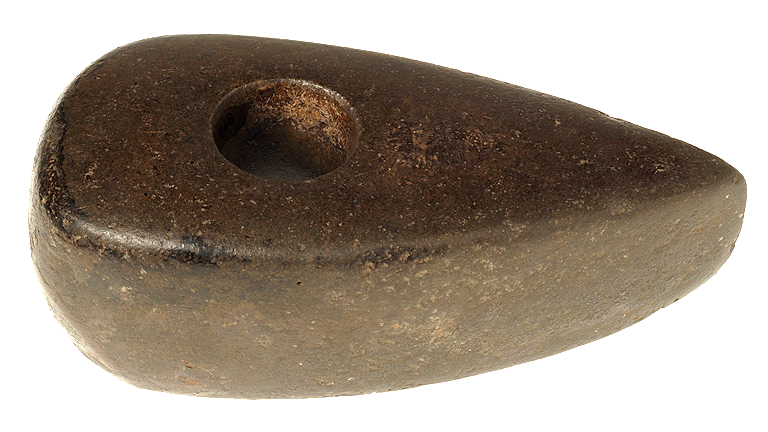Stone : dolerite
Type : microcrystalline magmatic rock
Age : between 420 and 360 million years (Devonian)
Quarry : Kerpointel, Tressignaux (Côtes d’Armor)
Why Is It Dark?
The color of a rock depends on the color of its minerals, their proportions, and their respective sizes. Dolerite contains large dark crystals of pyroxenes (minerals rich in iron and magnesium) and small whitish rod-shaped crystals of plagioclase. The grains are fine but visible with a magnifying glass.
The Good Breton Veins
The Breton subsoil contains many dolerite veins of very different ages. The most recent ones in the region date back 200 million years and are evidence of the opening of the Atlantic Ocean. These veins are easily observable in various parts of the Finistère coastline (Ploumoguer, Locmaria-Plouzané, Crozon, etc.). They are the only French witnesses of this oceanic opening.
When Rocks Turn into Spheres: Magic or Weathering ?
Some massive rocks, like dolerite or granite, weather into spherical shapes. This long geological process occurs beneath our feet. Water infiltrates the soil and then the subsoil by seeping into rock fractures (1). It gradually breaks down certain minerals. These weathered zones expand at the expense of the intact parts of the rock (2). The fractured, angular rock blocks slowly become rounded. Later, cleaned of their weathered casing, they emerge from the depths due to erosion (3). This phenomenon is responsible for granite chaos formations.
From the Neolithic to Today
Between 6000 and 2300 BCE, dolerite was highly sought after for making axe blades due to its mechanical properties and particularly fine grain. This stone industry was prominent in Armorica at the time and ended with the advent of metal (the Bronze Age). Note that dolerite was also used in traditional building. Today, the blocks from the quarry (called “eruptive cannonballs” by quarry workers) are used for ornamental purposes in gardens.



